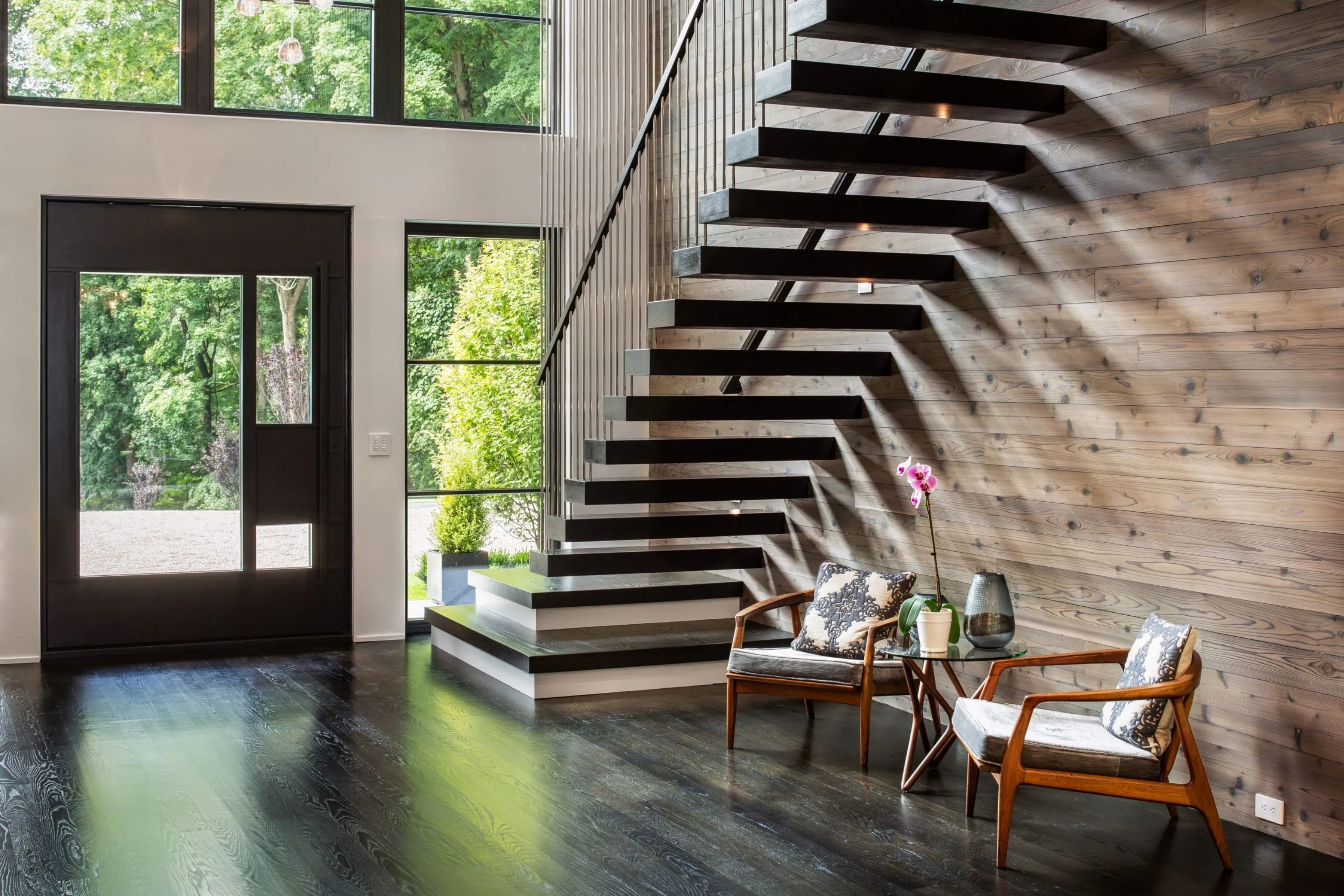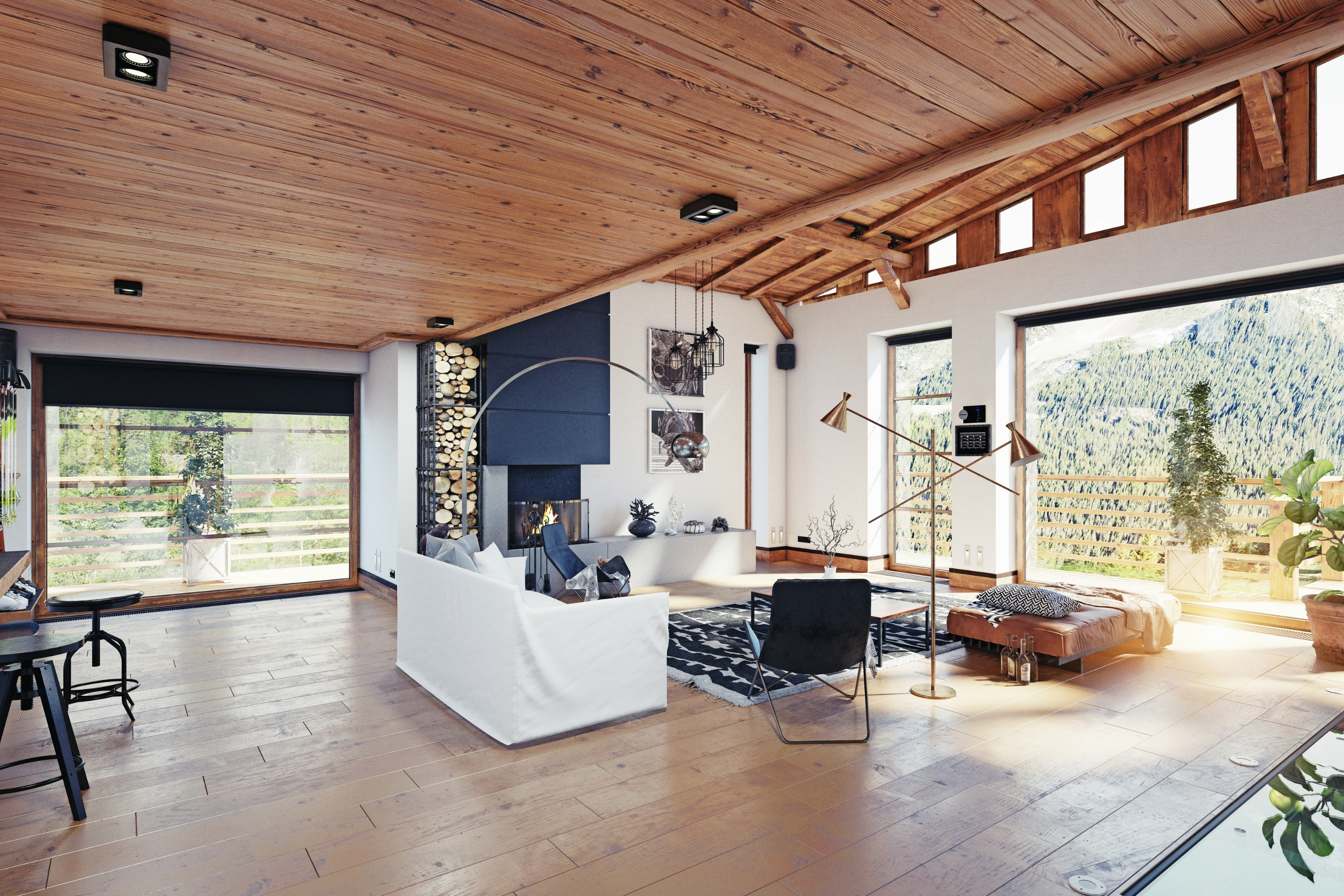Biophilic Interior Design: The Health Effects of Using Wood
27/05/2024
It is a fact that being surrounded by nature or being reminded of it feels good. So, can we make a conclusion about the way we design and organize our spaces based on this? We are only just beginning to understand and research the physiological and psychological effects that various materials can have on people. However, despite the fact that design is highly subjective, most people respond positively to nature-inspired designs and materials that have a strong connection to nature. Wood is undoubtedly one of these materials.
Among the myriad of materials available for interior design, wood stands out as a timeless and versatile medium, renowned not only for its aesthetic appeal, but also for its capacity to improve our mental and emotional states. Studies show that the use of wood in interiors can have a measurable impact on human health.
Science confirms that seeing natural elements promotes positive emotions, stress reduction, faster mental recovery and a reduction in subjective feelings of pain. A study by the Norwegian Institute of Wood Technology (NTI) on the health benefits of using wood indoors reveals that the use of wood in hospitals helps patients, families and staff feel better about the indoor environment. The study shows that the presence of wood has positive physiological and psychological benefits and can even shorten hospital stays by reducing recovery times. The natural feeling of warmth and comfort that wood evokes in people has the potential to lower blood pressure and heart rate, reduce stress and anxiety, and increase positive social interactions.
Although interior design trends are constantly changing, wood, as a timeless material, is not difficult to find a fundamental place in current new design approaches. Biophilic interior design, which is concerned with creating living spaces that aim to strengthen the relationship between the inhabitants and the natural environment, is one of them.
What is Biophilic Interior Design?
Image taken from resawntimberco.com.
The healing effect of nature is emphasized at every opportunity by various disciplines. Biophilia, a term coined by Harvard naturalist Dr. Edward O. Wilson, describes what he sees as humanity's attraction, affinity, love and longing for nature. In the daily routine of life, all health professionals talk about the importance of taking a break and spending as much time as possible outdoors. On the other hand, the majority of time is spent indoors. Biophilic design incorporates natural elements into the construction and interiors of buildings. Therefore, organic materials such as wood are important in interior design, as they create a sense of comfort and energy in the space. The use of wood is presented as a good alternative to improve health and peace of mind.
Wood is one of the few natural resources that provides benefits in different areas. It helps to reduce carbon emissions, provides greater durability in the building life cycle and helps occupants feel more peaceful and happy, while increasing their productivity.
Stress and Anxiety Reducing Effects
Wood interior design has a profound capacity to enhance emotional well-being by offering a unique blend of warmth, comfort and aesthetic appeal. Choosing wood in interior design is not just an aesthetic choice; it has a tangible impact on our mood. The natural texture and earthy tones of wood create a soothing atmosphere that encourages relaxation and peace. This sensory experience also has a positive impact on our emotions, helping to reduce stress and anxiety.
Research shows a link between the human autonomic nervous system and wood. Wood is known to provide stress-relieving effects such as lowering heart rate and blood pressure. When wood designs occupy a significant space in an interior, whether in the form of furniture, floors, beams or wall panels, they have a powerful calming effect.
Stable Mental Functioning
Wooden interiors also promote more stable mental health. It is more than a visual appeal; it is a sensory experience that carefully engages our senses. The patterns and textures of wood provide a tactile connection to the organic world. This awareness is crucial for mental well-being as it can reduce stress and promote a sense of calm. When surrounded by wooden elements such as furniture, flooring or wall paneling, occupants can often intuit a feeling of reduced stress and increased mental calm. The presence of wood indoors can also positively affect mental health conditions such as anxiety and depression.
The biophilic effects of wood can elicit a sense of wonder, enhancing our cognitive functioning and creativity. The beauty of wood design, combined with its ability to stimulate our senses and evoke positive emotions, contributes to an environment where mood and mind are revitalized, promoting psychological health.
Aesthetic Pleasure and Emotional Balance
The versatility of wood allows for a variety of design styles, from rustic to contemporary, ensuring that people can find a wooden interior design that suits their unique emotional needs. Wooden interiors evoke a holistic sense of comfort that goes beyond physical aesthetics. The tactile experience of wood, whether the smoothness of polished wood or the rustic feel of reclaimed timber, can elicit feelings of security and satisfaction.
Wooden interiors have the ability to elevate both mood and mind thanks to their aesthetic qualities. The visual appeal of wood, with its rich colors and varied grain patterns, can evoke feelings of aesthetic ecstasy. This aesthetic pleasure can lead to the release of endorphins, the body's natural mood-enhancing chemicals, which positively affect emotional well-being.

Dendro Planks-Pure Line Collection - Hamaxia D-53
The organic and timeless nature of wood fulfills our need for stability and connection, making it an ideal choice for interior design that aims to promote psychological comfort. Whether it's the warm embrace of a wooden living room or the coziness of a wooden bedroom, these spaces can become places of emotional balance and tranquility in modern life. By consciously integrating wood into interiors, we can harness its deep emotional resonance and create environments that support and enhance our overall well-being.
References
https://www.foresthomesstore.com/blogs/decor-for-wellbeing/little-known-facts-about-the-benefits-of-using-of-wood-in-the-interior
https://smhardware.com/incorporating-wood-into-interior-design-has-health-and-wellness-benefits/
https://bfppl.com/what-are-the-health-benefits-of-using-wood-in-interiors/
https://medium.com/@decolinx/the-psychological-impact-of-wooden-interior-design-9f17cafafaba





